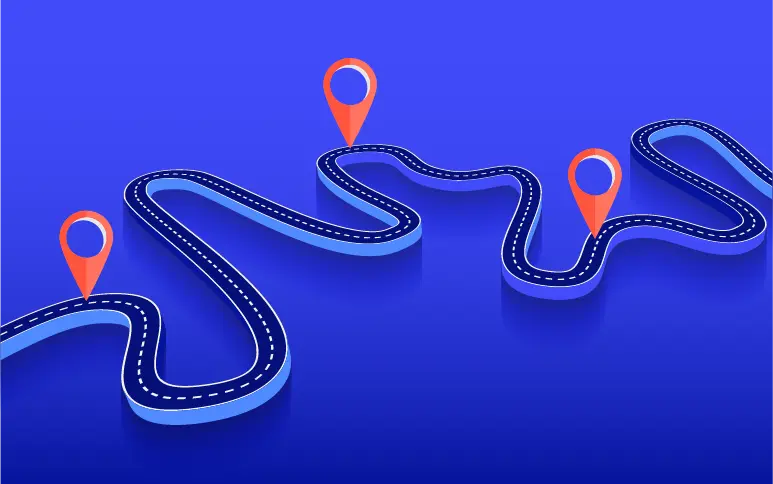Thematic view of the Optimizely roadmap
The roadmap for Optimizely gives you the tools to rapidly and easily create compelling, ever-optimizing digital experiences that drive meaningful outcomes for you and your customers.

Justin Anovick

In a previous post, I explained why Optimizely and Episerver are bringing our best-in-breed stacks together under the name Optimizely. But what does that mean in practice? In this blog, I’ll dig deeper into our roadmap and how we’re looking at combining our products, namely, the first combined solution Optimization-as-a-Service (OaaS). It’s just the first of many new things coming.
To help you unlock your digital potential, there are seven key themes we’re adding to our roadmap journey:
1. Easier technical Self Service
The promise of digital has always been the ability to move faster to bring new features to market or respond to an emerging need from a key customer segment. However, too often are deployment and execution capabilities locked away by the vendor with key tasks only doable via support tickets or managed service.
Our roadmap has continuously addressed the technical side of digital transformation as easy as possible. By putting more technical control in your hands, deployments such as rolling out prototypes, products, or individual product features can happen as soon as you’re ready without any additional cycle time.
2. More powerful AI/ML
Artificial intelligence and machine learning are the hottest buzzwords in our industry today. Every conference has an AI/ML track and every organization is interested in starting AI/ML pilots across different use cases. Our approach is to make AI/ML accessible and easy for you via capabilities that are easy to use for the business user.
Considering these use cases are usually the most difficult to understand, I wanted to provide a quick example: advanced AI/ML models are embedded with content and product recommendations so you can enjoy uplifts in engagement and conversion without an army of data scientists cleaning data, developing algorithms, and training models. Multi-armed bandit experiments can run with a few clicks instead of laborious development and instrumentation. Content audits occur automatically with natural language processing analyzing your content without manual effort.
Moving forward, you’ll see more and more capabilities like these examples where we’ve embedded AI/ML into the features that work for you rather than expecting you to spend valuable resources to make AI/ML work.
3. Revolutionized authoring
Optimizely believes in the editorial experience as the first line of great content and collaboration. We plan to revolutionize the authoring process to enable your editors to deliver more great content to your customers with less overhead.
We’ll be providing advanced workflows and collaboration tools to support the creation not just of content but of optimization experiments, prototypes, and products. We also plan to distribute the authoring experience, allow teams to collaborate on content within multiple applications and tools.
Additionally, you’ll find a comprehensive content planning and ideation system to integrate early-stage content creation activities directly within your DXP to reduce friction in your process.
4. Modernized technical platform
It’s hard to succeed without cutting edge digital experience tools, and that’s what we’ll be providing. Modern tools include technology-agnostic platform REST APIs – fast, lightweight, scalable, and ideally suited to mobile app development – in the world’s first fully headless DXP.
We’re also delivering outstanding SDKs, first-class support for the latest .NET 5 (formerly .NET Core) technology throughout the stack, an improved architecture for data capture, and new AI/ML models for even higher-performing content and product recommendations.
Finally, we’ll be embracing the emerging GraphQL protocol with an implementation on top of an all-new search product.
5. Increased integration options
While our DXP now touches a significant portion of the digital experience workflow across the create and optimize spectrum, we realize there will always be a need for our technology to integrate with other solutions in a composable manner. We get it and fully embrace this open ecosystem.
In addition, integration impacts our marketplace where partners are productizing common use cases and data connectors where pre-built integrations can shuttle data between our own products and your overall ecosystem.
6. Increased data insight power
Define the outcome, track the outcome, and deliver on the outcome – these are all steps in creating a more effective customer journey.
With our DXP now spanning across content, commerce, experimentation, recommendations, and many other capabilities that help you win in today’s digital economy, the breadth and depth of data that we generate and/or track can be your biggest source of competitive differentiation. Much of this data is first-party and specifically generated based on your digital assets, the behaviors you’re optimizing for, and the customers you have relationships with.
Our vision is to turn this data into powerful insights and present them in a manner that allows you to take action quickly on the real-time information.
7. Enhanced developer experience
Although we’re leaning heavily into self-service, there’s still an important role for developers. We know that some features and experiences can only be developed through code and integration. For this, we’re providing tools for developers and product teams which will make it easier to roll-out new features, products, and functionalities, increase their impact, and reduce risk. Development should be a process of bolting together proven pieces of a framework, not bootstrapping everything from scratch.
First step of our journey: OaaS
These seven initiatives can be thought of as the perfect recipe for the future of OaaS. Optimizely is the first solution deeply rooted in these themes, and furthermore, it’s deployable on top of any CMS or commerce engine. It’s superior to other A/B and multivariate testing tools thanks to its purpose-built and AI/ML-driven recommendation engines. Additionally, those recommendation engines are superior to others thanks to best-in-class experimentation and optimization tools.
